Cytosolic sulfotransferase 2B1b promotes hepatocyte proliferation gene expression in vivo and in vitro
- PMID: 22679001
- PMCID: PMC3423104
- DOI: 10.1152/ajpgi.00403.2011
Cytosolic sulfotransferase 2B1b promotes hepatocyte proliferation gene expression in vivo and in vitro
Abstract
Cytosolic sulfotransferase 2B1b (SULT2B1b) catalyzes the sulfation of 3β-hydroxysteroids and functions as a selective cholesterol and oxysterol sulfotransferase. Activation of liver X receptors (LXRs) by oxysterols has been known to be an antiproliferative factor. Overexpression of SULT2B1b impairs LXR's response to oxysterols, by which it regulates lipid metabolism. The aim of this study was to investigate in vivo and in vitro effects of SULT2B1b on liver proliferation and the underlying mechanisms. Primary rat hepatocytes and C57BL/6 mice were infected with adenovirus encoding SULT2B1b. Liver proliferation was determined by measuring the proliferating cell nuclear antigen (PCNA) immunostaining labeling index. The correlation between SULT2B1b and PCNA expression in mouse liver tissues was determined by double immunofluorescence. Gene expressions were evaluated by quantitative real-time PCR and Western blot analysis. SULT2B1b overexpression in mouse liver tissues increased PCNA-positive cells in a dose- and time-dependent manner. The increased expression of PCNA in mouse liver tissues was only observed in the SULT2B1b transgenic cells. Small interference RNA SULT2B1b significantly inhibited cell cycle regulatory gene expressions in primary rat hepatocytes. LXR activation by T0901317 effectively suppressed SULT2B1b-induced gene expression in vivo and in vitro. SULT2B1b may promote hepatocyte proliferation by inactivating oxysterol/LXR signaling.
Figures



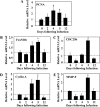
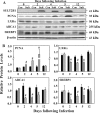
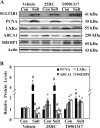
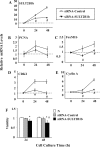
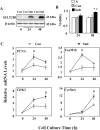
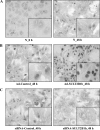

References
-
- Blaschke F, Leppanen O, Takata Y, Caglayan E, Liu J, Fishbein MC, Kappert K, Nakayama KI, Collins AR, Fleck E, Hsueh WA, Law RE, Bruemmer D. Liver X receptor agonists suppress vascular smooth muscle cell proliferation and inhibit neointima formation in balloon-injured rat carotid arteries. Circ Res 95: e110– e123, 2004 - PubMed
-
- Bochelen D, Mersel M, Behr P, Lutz P, Kupferberg A. Effect of oxysterol treatment on cholesterol biosynthesis and reactive astrocyte proliferation in injured rat brain cortex. J Neurochem 65: 2194– 2200, 1995 - PubMed
Publication types
MeSH terms
Substances
Grants and funding
LinkOut - more resources
Full Text Sources
Other Literature Sources
Molecular Biology Databases
Miscellaneous

